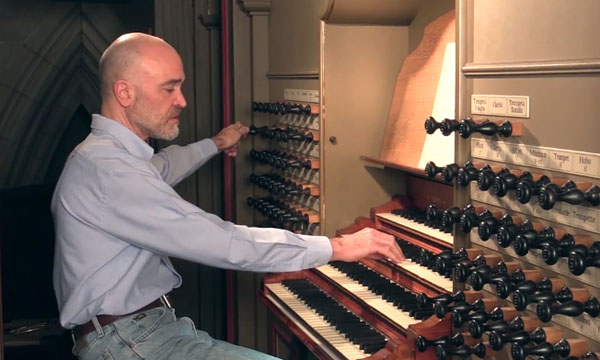How an Organ Makes Music
Duke Chapel's organ curator demonstrates how the complex instruments work
Tinkering with musical machines runs in John Santoianni's blood. Hailing from a family of engineers and machinists, he has worked in the organ tuning and maintenance business for decades. As Duke's Ethel Sieck Carrabina Curator of Organs and Harpsichords, he cares for 18 instruments across campus. In the above video, Santoianni takes us on a tour of one of them: the Benjamin N. Duke Memorial Organ in Duke Chapel.

The organ (also called the Flentrop) was built by Dirk A. Flentrop of Holland in 1976. It comprises 5,033 speaking pipes and rises approximately 40 feet above the gallery floor. It is one of three organs in the chapel -- together, they have several miles of wiring and tens of thousands of pipes.
Chapel organist Christopher Jacobson remarked, when he joined the Chapel last summer, on the rare opportunity to experience three organs with different legacies in one place.
"It’s kind of like having a Ferrari, a Porsche and a Maserati in your garage all at the same time," he said. "Though there is lots of crossover it is extremely rare to have three varied instruments of this caliber all helping to glorify worship in Duke Chapel together."
Santoianni is content to let the organs take center stage. He works behind the scenes to keep their many moving parts in tune and as close to their original condition as possible.
"If I'm doing my job really well," he says, "you won't even know I'm here."
Learn more about the organs on the Duke Chapel website.